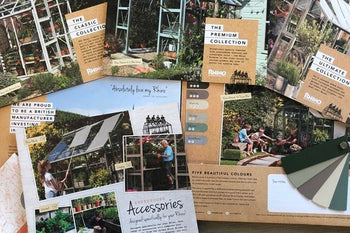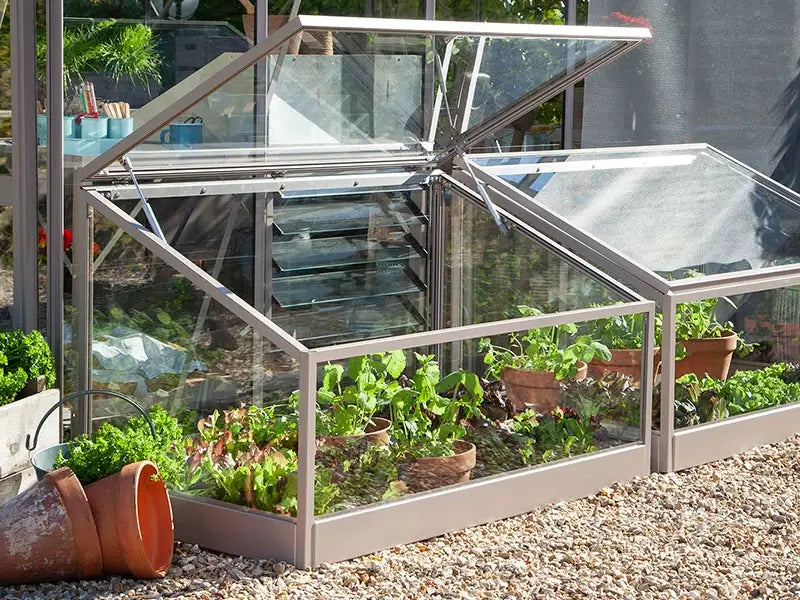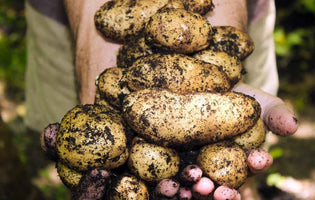Request a Brochure

Luckily chilli growing season in full swing, so it’s the perfect time to start sowing these fiery fruits. The earlier you start, the longer and more fruitful a harvest you should enjoy.
There are over 4000 varieties of chillies in the world with a phenomenal range of flavours and heats, from fun and sweet to fierce and fiery. In the UK, they are a popular plant to grow in gardens, greenhouses and window sills because they are a relatively low maintenance crop. Originating in hot climates, chilli plants prefer warm and sunny positions to thrive; making a greenhouse an ideal place for them.
The most popular chilli plants to grow in the UK include the Scotch Bonnet, Jalapeno, Tabasco, Cayenne and Habanero varieties.
Quick Links

The growing cycle of a chilli plant (in a greenhouse)
|
January |
February |
March |
April |
May |
June |
|
|
Sow | Sow | Sow | Grow | Grow |
|
July |
August |
September |
October |
|
|
|
Grow/Harvest |
Harvest |
Harvest |
Harvest |
NB: Cycles like these are always a best guess, and with a good environment, it is possible to sow in January and harvest even into December!
HOW TO GROW CHILLI PLANTS FROM SEED IN A GREENHOUSE
Most chilli plants should be sown between February and April but some of the hotter varieties could benefit from being sown even earlier to allow extra time to grow and mature. Fill some pots with good quality growing compost (a loose structure is best), flatten it out and place the seeds on top. Cover them with a thin layer of compost or Vermiculite. Give your seeds a little water and remember to label! This step is especially important if you are planting multiple types of chillies with differing levels of spiciness!
Chilli peppers like it hot, so aim for a temperature of around 25-30 degrees Celsius during the day and 15 degrees at night. Check out our range of Greenhouse Heaters here!

HOW TO NURTURE CHILLIES
Once your seedlings have germinated and grown their first true leaves, it's time to transplant them into 20-25cm pots, filled with quality general purpose compost (read our compost guide here). Then place them in a sunny spot of the greenhouse. Chilli plants benefit from a supporting stake or bamboo cane - get this in position early so as not to disrupt the roots later on and begin tying it regularly to keep the stem from flopping and breaking as it grows. Once they get to around 20cm tall, you can start pinching out the growing tip and side shoots to encourage a better crop.
Make sure the plants are well watered, especially in a greenhouse; twice a week during the warmer months. Feed them with general liquid feed when the first flowers appear to get a bumper crop. It is also worthwhile spritzing the leaves with water too as this will keep away pests such as red spider mites.
Top tip: The plants need to pollinate in order for the fruits to grow and this is difficult to occur naturally in a greenhouse, where there are fewer pollinators To encourage pollination, the pollen within the flowers needs to be released and spread around the flower head. You can enable this release of pollen by gently rubbing the flower heads with a finger or small soft paintbrush.
Chillies are ripe and ready to pick when they turn red, orange, or yellow (usually around mid-summer/ autumn if grown in a greenhouse. Picking regularly will encourage more fruit to grow. Wearing gloves, cut the stem close to the base of the fruit using a sharp knife.
Then simply sit back (ideally with a large glass of wine) and enjoy the spicy fruits of your labour!
HOW TO SAVE CHILLI SEED FOR NEXT YEAR
Much like tomatoes and other fruits, you can save some of the seeds from your chilli plants for next year.
- Scrape the seeds out into a sieve and remove as much of the gelatinous layer around the seeds as possible under running water .
- Empty the seeds onto two layers of kitchen paper and spread them out to dry. If you know the variety, write it down on the kitchen paper (if you know it!) and leave to dry for a couple of days.
- You can then simply fold the paper and store in a labelled envelope in a cool, dark place until next February
WHAT CAUSES HEAT IN CHILLIES?
Chillies contain a chemical called Capsaicin (Cap-say-a-sin) which causes the spiciness. The chemical is an irritant for mammals and causes a burning sensation when it comes in contact with tissue. Some people say there are some medicinal benefits of Capsaicin, including reducing insulin spikes in diabetes and relieving topical pain but large amounts of the chemical can cause huge discomfort and nausea.
The hotness of a chilli pepper is measured on the Scoville Scale. For context the common Jalapeno pepper is 2500-8000 Scoville Units, the Scotch Bonnet 100,000 - 350,000. The hottest chilli pepper in the world is called the Carolina Reaper and measures at 1,500,000+ Scoville Units making it is 200 times hotter than the Jalapeno. The Carolina Reaper was developed by crossing a Red Habanero and a Naga chilli.

HOW TO PRESERVE CHILLIES
A great way to make use of your bumper crop of chillies is to dry them out or freeze them. By drying them out, you then have numerous opportunities for trying chillies in different ways and, as a result of the preservation process, much longer to try them all out.

How to dry chillies
Air drying chillies is simple and can be done inside your greenhouse or home. Not only is it a great way to use the chillies up, they look striking too.
- Pick the chillies ensuring that you pick them with a 2-3cm stem.
- Bunch them together and tie string around the stems.
- Hang them from something like a curtain pole or a string line hung in the eaves of your greenhouse.
- They will take a few weeks to dry, depending on how warm it is.
You can also dry chillies in the oven which may be easier for people living in cooler climates.
How to Freeze Chillies
Chillies handle being frozen very well too and are another very simple way of preserving or dealing with a glut. Simply bag them up and pop them into the freezer. They can be chopped up and thrown straight into your cooking - perhaps for a stir fry. Or they can be grated directly over a bowl of steaming pasta.
Updated 28 February, 2023
Published January 1, 2021








